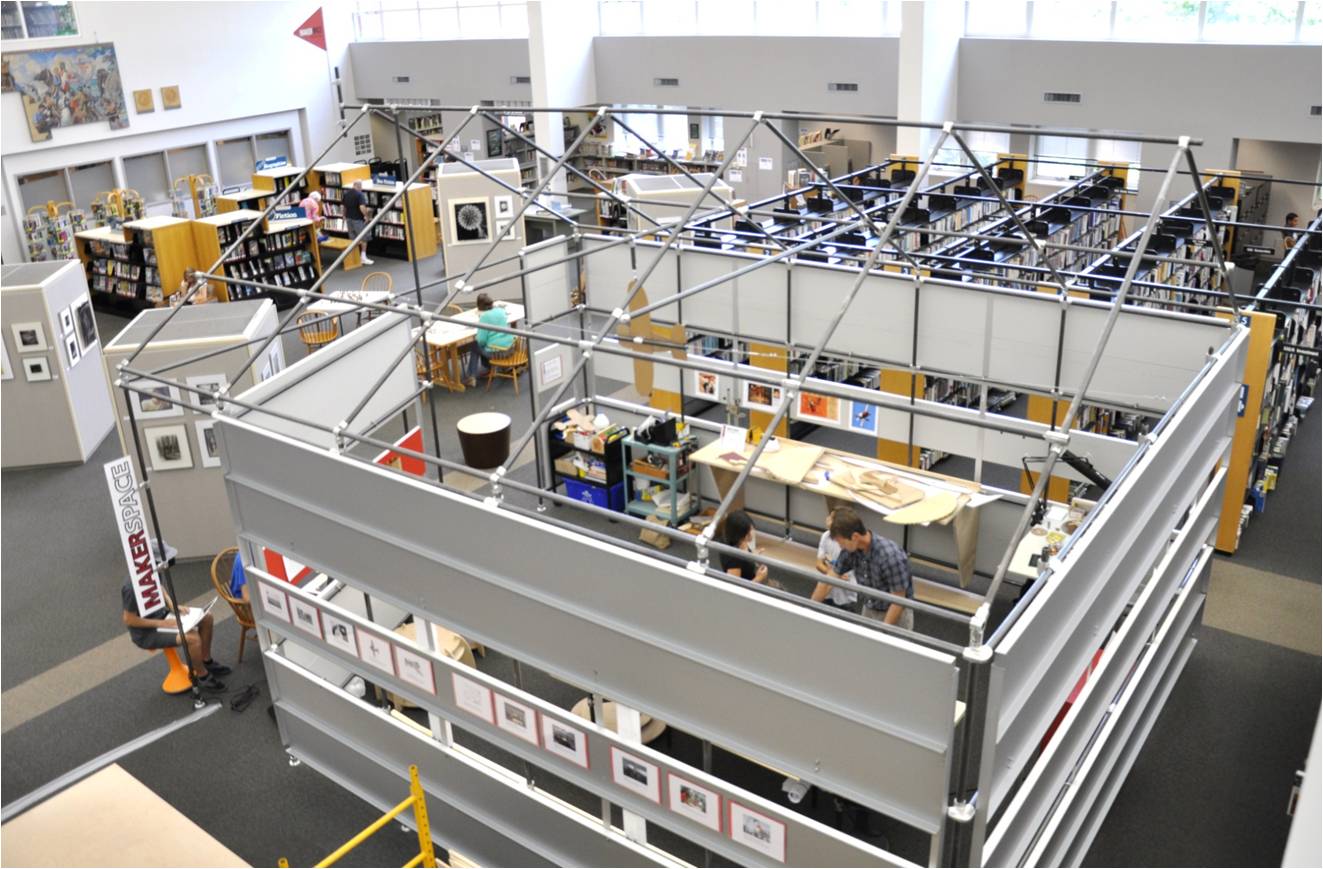Fab labs reshape architecture, one maker at a time

Fab labs, community workshops filled with computers and digital fabrication tools such as 3-D printers, are the next big thing in the world of architecture. There’s no serious architecture school or university design program without one. And “maker spaces” are popping up at local libraries, community charities, and even in downtown cafés.
MIT physicist Neil Gershenfeld opened one of the first, and he pioneered the notion of personal fabrication -- basically small-scale, localized manufacturing -- as a promising solution for various global challenges.
The costs of fabber technology is dropping, though still a barrier to entry. The tools are certainly easier than ever to use, and the benefits can be big. Drop a Makerbot in a public place, and kids suddenly bring home self-made toys. Gershenfeld has described how a fab lab “with just $20,000 worth of laser cutters, milling machines and soldering irons can transform a community, helping people harness their creativity to build tools, replacement parts and essential products unavailable in the local market.”
That means newfound self-sufficiency in some parts of the world -- from far-flung, impoverished rural towns to desperate city streets.

Nonprofits and deep pockets
That’s why nonprofit fab labs are opening in many cities -- from Berkeley to Barcelona to Bangladesh. It also explains their popularity in public venues, like newly outfitted libraries in Wisconsin and Connecticut, or hipster hangouts like Fat Cat Fab Lab in New York and the S.T.E.A.M. Room in Iowa City.
But those with deep pockets are exploiting these tools first and fastest. Biotech companies are pairing rapid prototyping with clean rooms. Healthcare providers are using digital fabrication to produce medical devices, implants and custom prosthetics. The U.S. Army is touting its new Mobile Parts Hospital, a shipping container with a complete fab lab within, including a 3-D part builder using metal powder.
Then there’s the world of architecture, construction and infrastructure. For large-scale projects, the effect of digital fabrication is a tiny sliver of the total market. For a decade or more, many architects have found ways to build custom hardware, finishes and structures. But this has happened on a small scale.
This will change. Quickly.
In fact, fab labs are the perfect match. Think of it this way: Building construction is the ultimate decentralized, customized industry. Transportation costs are among the most variable and punishing for the teams building these one-off designs. Just-in-time manufacturing is the opposite of what architects and contractors usually anticipate. Often, the schedule for a large new building hinges entirely on whatever specified product has the longest lead-time for production.
Faster and cheaper
So if the means for producing a building product is located right on the job site, the cost of scheduling and transporting is neutralized. And a fab lab doesn’t care if the building product is a one-of-a-kind shape or a recurring one. After all, we’re printing it and cutting it right now, made to order.
In this way, the construction team and owners will benefit. And that’s what drives change in the buildings world.
Recent experiments in distributed fabrication suggest how this might work. Mini labs equipped with nothing but the basics -- a computer, Internet connection, television and a dedicated container for the equipment and materials -- can be trucked to remote building sites. Or a larger network of large-scale fab labs with industrial capabilities will serve the construction industry.
This model already exists: fabricators, installers and specialty contractors are often the last stop on the way to a construction site. Some homebuilders and general contractors invest in fabrication workshops to speed up or better control their projects. Thousands of mom-and-pop plants dot the countryside to make basic materials like concrete and asphalt, essentially on demand. More sophisticated fabricators build to spec.
Kinkos for construction?
As fab lab technology and construction specialties merge, this installer base will become a network similar to instant print shops -- kind of like the FedEx Office online service, formerly Kinkos. While consumers may have cheap, small-scale 3-D printers, these large-scale fabbers will have big CNC milling tables and computer-guided routers that can slice through steel and etch glass.
Why should architects care? Two things will drive the use of fab labs. First, pure economics will encourage designers to think of which supply route is the most efficient. Second, pure aesthetics: As university fab labs and avant garde designers have shown, working with fabrication technology offers subtlety of expression, the ability to create low-cost innovations and truly customized solutions.
These are some hallmarks of great architecture made possible by digital fabrication.
A number of manufacturers are using the technology, often without boasting of the tools used. Designers such as Diatom Studio have created simple tools like SketchChair and other open-source software solutions. Diatom’s is limited to a personalized piece of digital furniture made from CNC-milled plywood. But any fab lab in your neighborhood with the right milling machine and plywood can output the design.
BIM and fab labs
The use of building information modeling (BIM) facilitates this very attractive capability at the commercial scale. Today, the ability to construct prefabricated timber buildings using the same model is not only possible, but transforming the building process in places like Norway, where the Intelligent House Configurator has been used for several years.
With more fab labs and BIM-ready woodworking shops, we’ll see these applications grow. In the meantime, developers and homebuilders of scale are racing to create their own systems.
Other examples of the trend include the FabLab House, a curvy wood-framed igloo wrapped with flexible solar panels that recently won the European Solar Decathlon. The house is for sale -- a bargain at 45,000 euros -- in five stock configurations such as Cottage and Villa.
The project, which involved architects and experts from 20 countries, was developed by Gershenfeld’s own Center for Bits and Atoms at MIT and Barcelona’s Institute for Advanced Architecture of Catalonia. Various industries supported the FabLab House project, such as the conglomerate Schneider Electric and the rug-maker Nani Marquina.
On a larger scale (but with a lower profile) is CasaFlex, a patented system for designing and manufacturing new buildings. Created by Mexican architect Carlos Garciavelez y Cortazar and operated with the big Mexican contractor ICA under a national government contract, the CasaFlex system uses mass-customization of precast concrete elements, configured as needed and produced on a just-in-time basis from BIM files.
The companies boast of building up to 50 prison cells a day with CasaFlex, though it can be used for houses and high-rise buildings, too. To reduce costs, the team is using standardized elements like doors, railings and windows. But CasaFlex also works with any bespoke design. It’s quick, efficient and fully fabbable.
From fab labs to factories for digital fabrication, the future of architecture looks simply, well, fabulous.
This post was originally published on Smartplanet.com